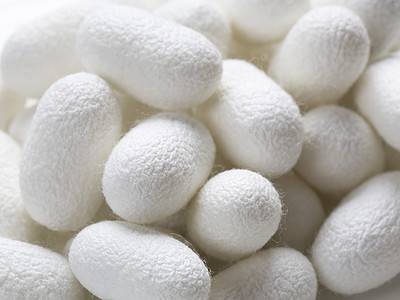A cocoon is a protective covering spun or constructed by certain types of animals during their larval or pupal stages, or as adults to protect their eggs. They protect the developing animal from predators and weather-related environmental conditions. Once the animal has metamorphosed inside, it will emerge as an adult ready to mate and reproduce. Discover the difference between a cocoon and a chrysalis here.
What Animals Fashion Cocoons?
A variety of animals, primarily insects, construct cocoons, typically during their larval stage. Bees, beetles, fleas, flies, leeches, moths, wasps, and worms all construct them. Most are fashioned of silk which is secreted from specialized glands that vary across species. Fibroin, a protein comprises most of the silk.
Moths
There are over 160,000 species of moths worldwide. Their life cycles and behaviors vary widely depending on the specific species. However, the majority of moth species metamorphose into their adult forms inside cocoons.
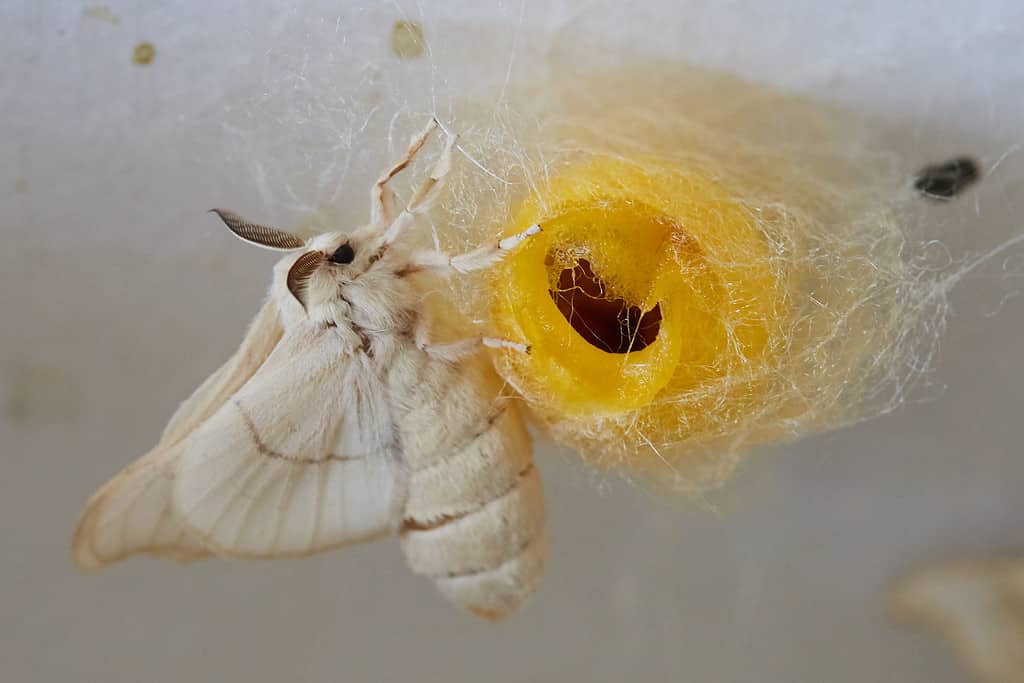
A silkworm moth emerging from its cocoon.
©Macronatura.es/Shutterstock.com
Wasps
Some species of parasitic wasps (Braconid) lay their eggs in the bodies of other insects. After consuming the host larvae, the wasp larvae then spin cocoons. They are typically small, white, and papery. Braconidae produces ones that resemble grains of rice in shape and size, often elongated and tapered at one end. They may be white or pale in color.
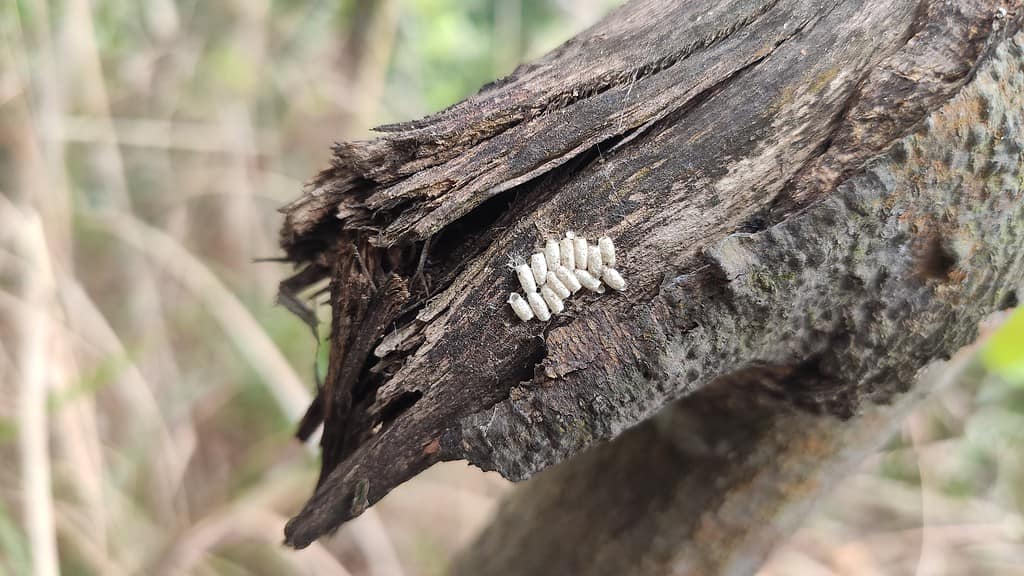
The cocoons of parasitic wasps are typically small, white, and papery.
©Pharisee Lee/Shutterstock.com
Glyptapanteles wasp larvae manipulate the behavior of their caterpillar hosts, essentially turning them into zombie-like bodyguards that protect the wasp pupae from predators. The caterpillar ultimately dies from the consumption of its body fluids by the wasp larvae.
Flea Cocoons
Fleas (Ctenocephalide) construct silken cocoons including the cat flea (Ctenocephalides felis), the dog flea (Ctenocephalides canis), and the human (house) flea (Pulex irritans). The larvae of these flea species spin silken cocoons in which they pupate and develop into adult fleas. Particles of debris and the host’s fur often cover the cocoon which helps to camouflage and protect it. Once the pupa has fully developed, the adult flea emerges and seeks a host on which to feed and reproduce.
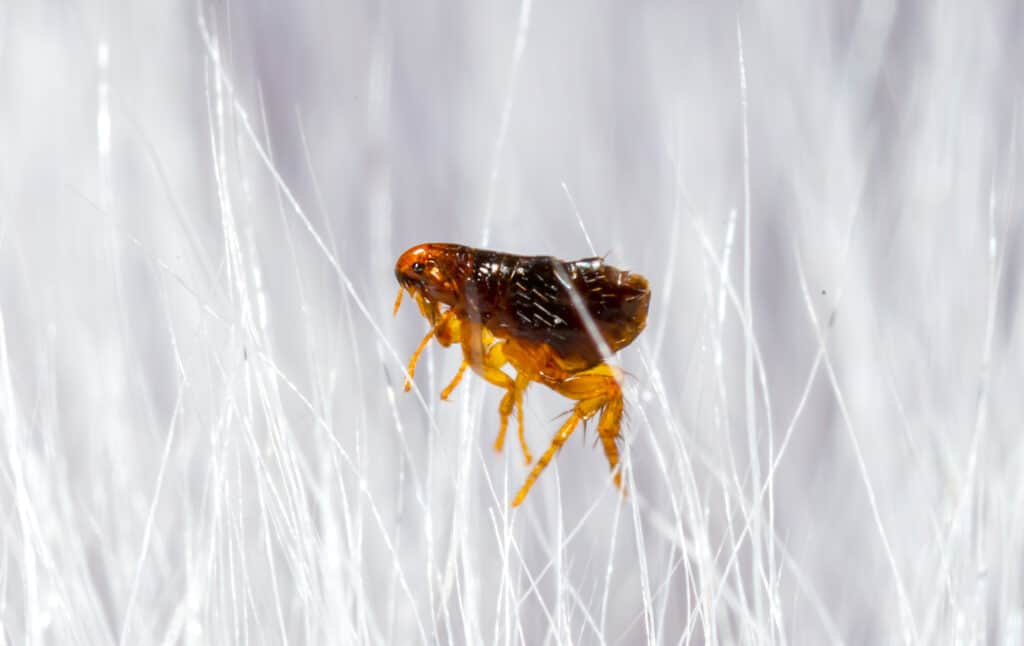
the adult flea emerges from the cocoon and seeks a host on which to feed and reproduce.
©Vera Larina/Shutterstock.com
Fly Cocoons
Flies including caddisflies and lacewings are spinners.
Caddisfly
Caddisfly (Trichoptera) cocoons are constructed from silk, which is produced by the larva. Sand, stones, twigs, or shells reinforce the silk, The appearance can vary widely depending on the species of caddisfly and the materials available in the environment.
Some caddisfly larvae construct their cocoons in a cylindrical or conical shape, while others are flat or oval-shaped. Some species of caddisflies even construct elaborate structures that resemble tiny houses or snail shells. Silk threads attach the larvae to rocks or vegetation underwater. The cocoon protects the larva from predators and provides a stable environment for its development into an adult. Once the larva has completed its development, it emerges as an adult caddisfly. In some species, the adult caddisfly will even use the silk from its larval stage to construct a protective case for itself as it continues its life cycle.
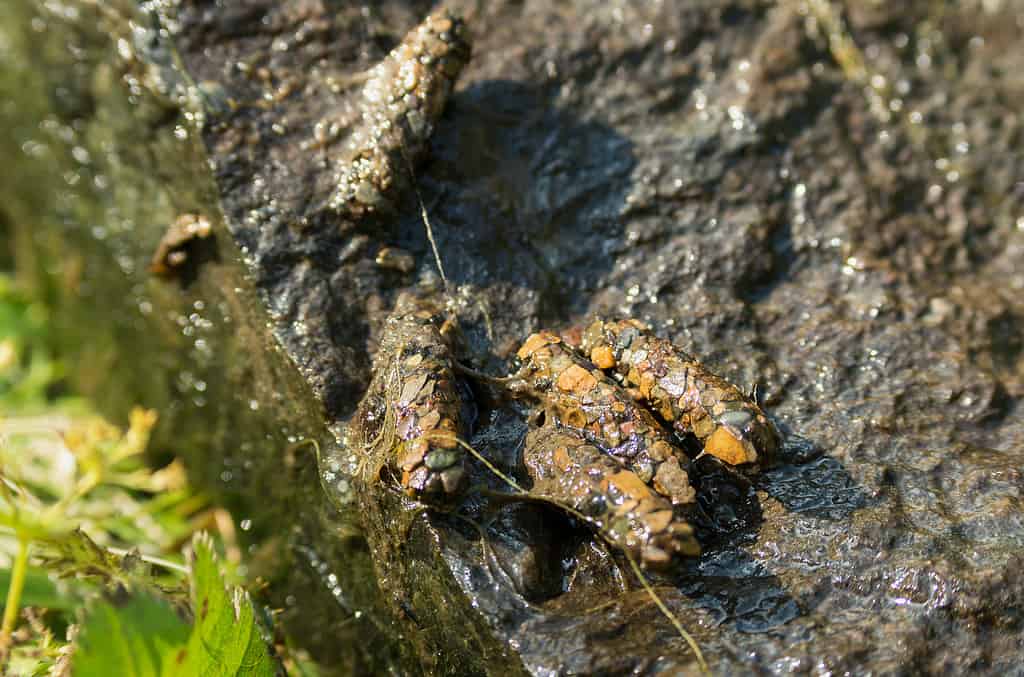
The silk of the caddisfly’s cocoon is often reinforced with materials such as sand, stones, twigs, or shells.
©Evgeni Romanov/Shutterstock.com
Lacewing
Lacewing (Neuroptera) cocoons are constructed from silk produced by the larvae. The silk is often reinforced with debris such as soil particles, plant fragments, or even the remains of their prey. The resulting structure is usually oval or elliptical and brown or green or white in color, depending on the materials used in its construction. Lacewing cocoons are typically attached to the undersides of leaves or to other surfaces. Once the larvae have completed their development, they emerge as adult lacewings.
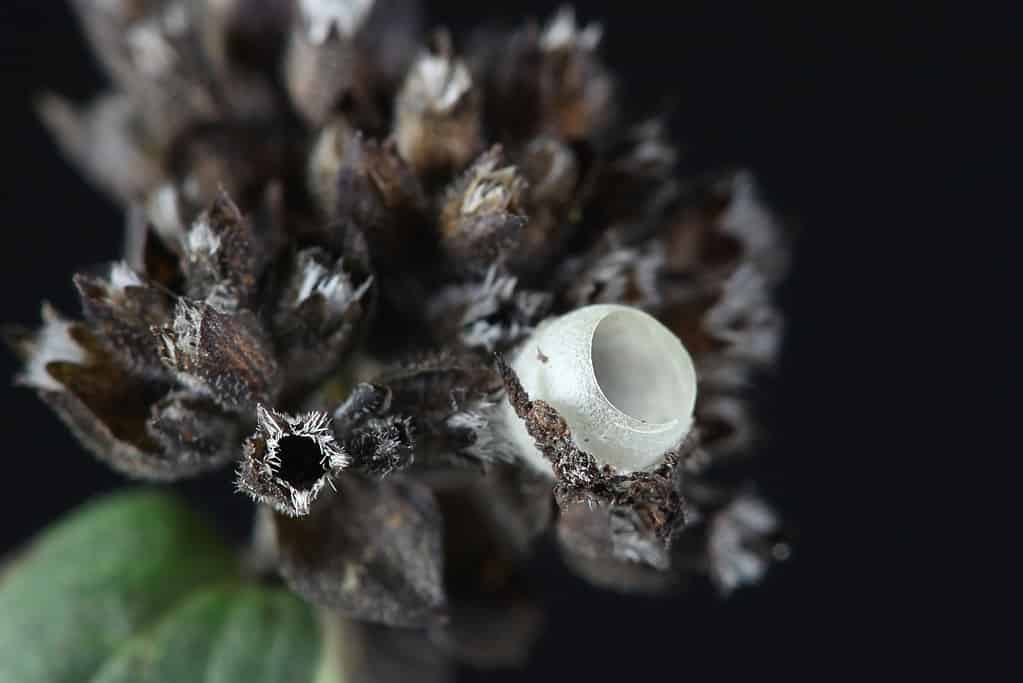
Lacewing cocoons are typically attached to the undersides of leaves or to other surfaces using silk threads.
©Henri Koskinen/Shutterstock.com
Bee Cocoons
Some species of Megachilidae, such as mason bees (Osmia), and Apidae such as orchid bees (Euglossini) spin cocoons during their pupal stage. These are made of silk and are used to protect the developing bee inside.

A cluster of mason bee (
Osmia)cocoons.
©M Huston/Shutterstock.com
Beetles
Jewel beetle larvae (Buprestidae) spin cocoons from silk. Ground beetles (Carabidae) and desert beetles (Parastizopus armaticeps) create protective pupal chambers or cells underground. Their larvae spin their cocoons within these chambers which offer an extra layer of protection from predators and the elements. Lady beetles (Coccinellidae) spend approximately two weeks metamorphosing prior to emerging.
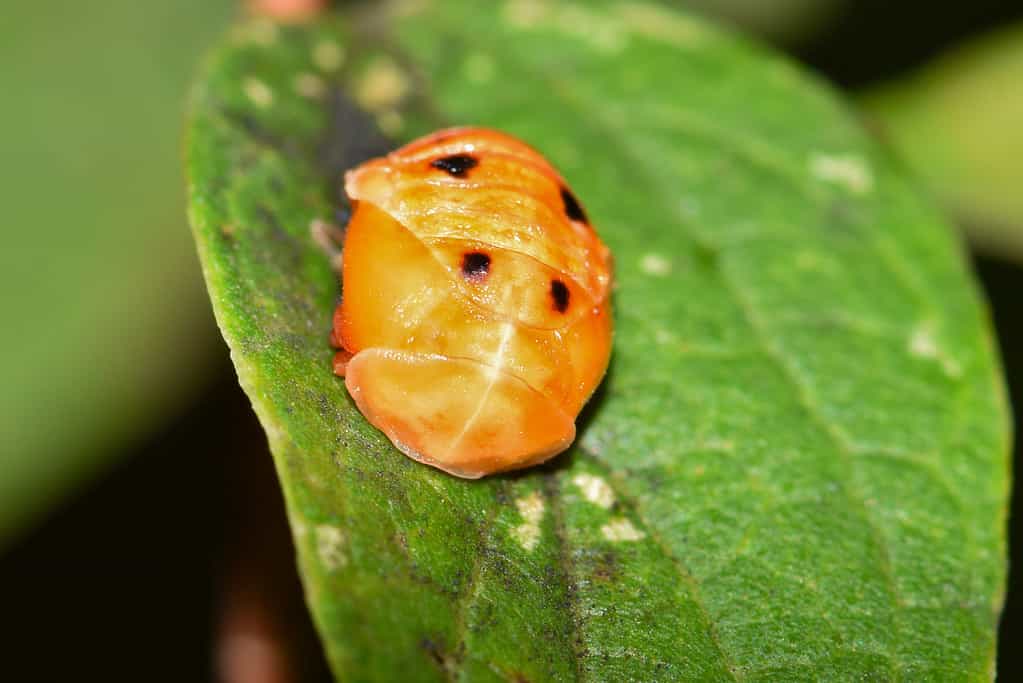
Lady beetles (
Coccinellidae) spend approximately two weeks metamorphosing inside a silk cocoon prior to emerging.
©Brett Hondow/Shutterstock.com
Worms
Some species of earthworms spin cocoons made of a mixture of soil particles and mucus that the worm secretes. The earthworm lays its eggs inside. The structure protects the eggs and developing embryos until they hatch. The baby earthworms that emerge from the cocoon will grow and develop over time, eventually reaching maturity and producing their own cocoons.
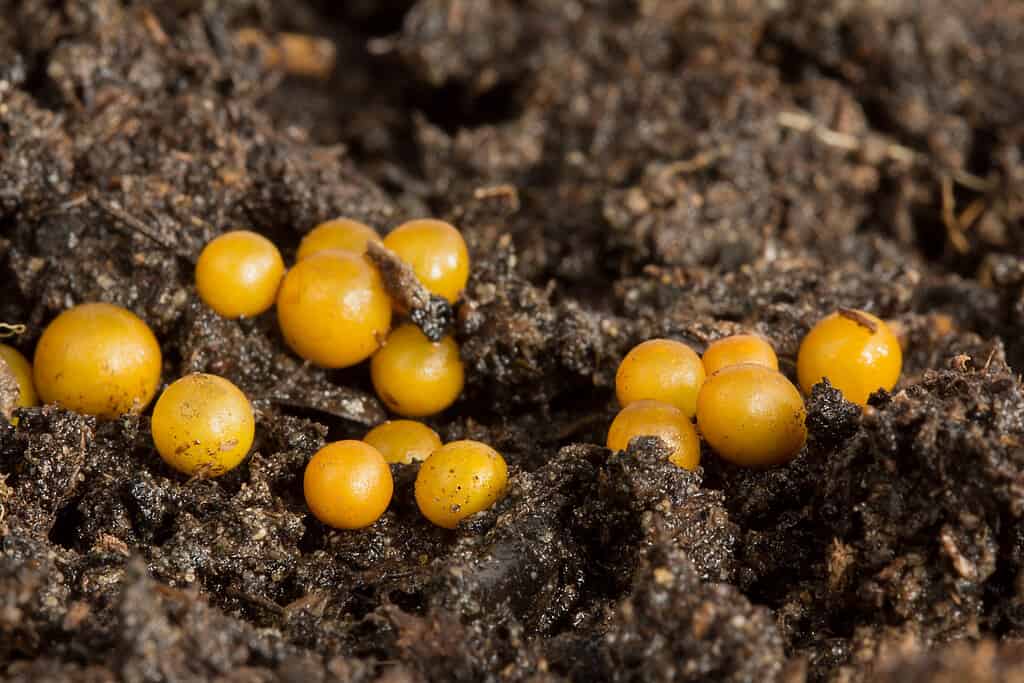
Some earthworms spin cocoons made of a mixture of soil particles and mucus that the worm secretes.
©Torsten Rempt/Shutterstock.com
Leech Cocoons
Leeches (Clitellata) build cocoons. Glossiphoniid leeches are freshwater leeches are found in various parts of the world, including North America, Europe, and Asia. Some common examples of glossiphoniid leeches that spin include the European medicinal leech (Hirudo medicinalis) and the freshwater leech/North American medicinal leech (Macrobdella decora).

leeches that build cocoons include the European medicinal leech
(Hirudo medicinalis) and the freshwater leech (
Macrobdella decora).
©279photo Studio/Shutterstock.com





